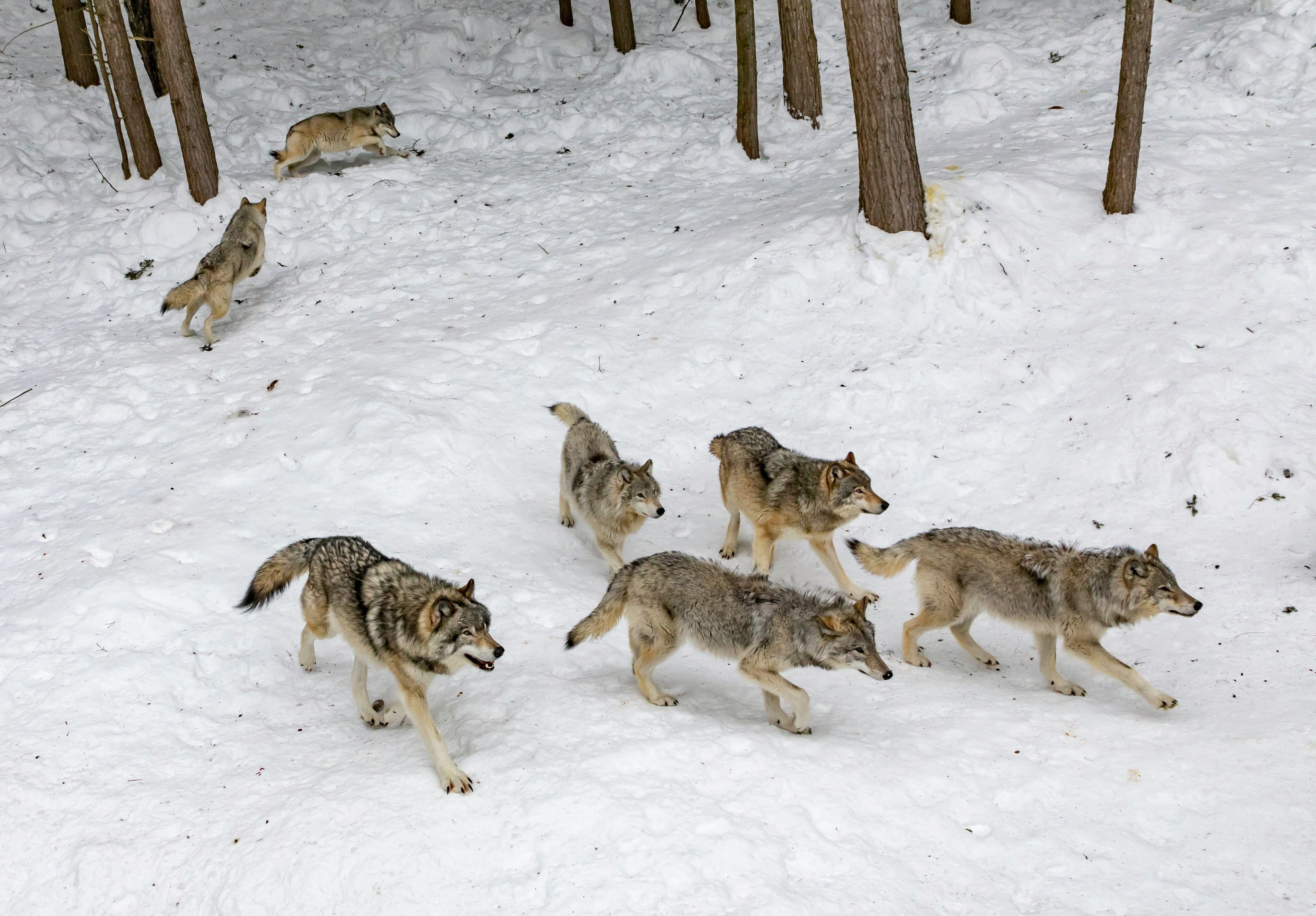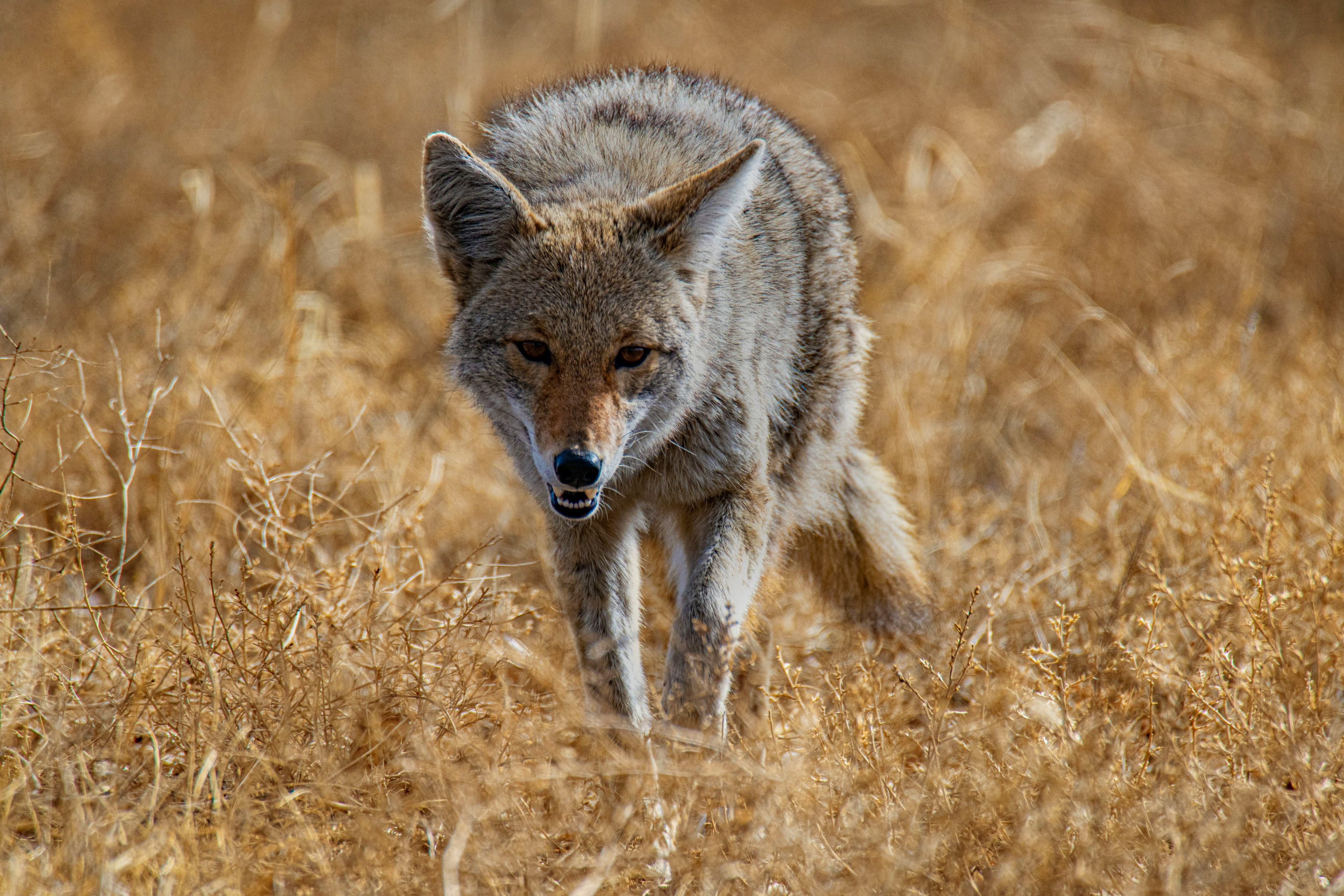Varmint Hunting Essentials: Gear, Techniques, and Tips


Justin Hunold
03/04/2024
Varmint hunting involves targeting tiny to medium-sized animals considered pests due to their impact on agriculture, livestock, or property. Often pursued for pest control rather than as a game for food or trophies, varmint hunting requires a nuanced understanding of the targeted animals, including coyotes, rabbits, and crows. Hunters must know these animals' specific behaviors and habitats to control their populations effectively.
The appropriate equipment and techniques are critical for success in varmint hunting. Hunters may choose from various firearms, including high-velocity rifles and rimfires, each selected based on the size and distance of the game. Lever action and adjustable rifles are popular choices, offering precision and versatility. Additionally, knowledge of and adherence to local legislation and ethical considerations are paramount, ensuring that hunting practices contribute positively to ecological balance and conservation efforts.
What animals are typically classified as varmints when hunting?
Varmints typically include animals like coyotes, rabbits, groundhogs, and prairie dogs. These species are often considered pests due to their impact on ecosystems and human activities.
Varmint Hunting Overview
Varmint hunting combines wildlife management with outdoor sporting. This section explores this practice's definitions, species targeted, and historical context.
Definitions and Species Targeted
Varmint hunting refers to the pursuit of certain wild animals designated as varmints. These animals are typically considered pests due to their numbers and impact on agriculture, livestock, or property. The species targeted vary regionally but commonly include:
- Coyotes: Problematic for livestock, especially in rural areas.
- Rabbits: Can destabilize ecosystems by overgrazing.
- Raccoons: Known to damage crops and carry diseases.
- Squirrels: Impact natural reforestation through seed predation.
Historical Perspectives
Varmint hunting has roots in being an essential aspect of subsistence and land management. Historically, this practice has been necessary for protecting crops and livestock from pests. In many regions, such as Texas, it is ingrained as both a tradition and a necessity in wildlife management. Over time, advances in firearms and hunting techniques have further shaped the approach to controlling these animal populations.
Conservation Concerns
Varmint hunting can impact local ecosystems, and conservation laws aim to balance wildlife populations with habitat health.
- Species Management: Regulated hunting helps control overpopulated species, such as coyotes, which can significantly affect other wildlife.
- Habitat Protection: Laws also work to prevent overhunting, which could lead to habitat degradation and biodiversity loss.
Ethical Practices
Ethical hunting practices are just as crucial as legal adherence and include the fair chase and humane treatment of the animals.
- Fair Chase: Ethical hunters engage in hunting practices that give their quarry a fair chance to evade them.
- Humane Methods: Using appropriate firearms and techniques is essential to ensure a quick and humane end to the targeted varmint, minimizing suffering.
Equipment and Techniques
Successful varmint hunting relies heavily on selecting the right equipment and employing effective techniques. Understanding the appropriate firearms, trapping methods, and tracking strategies is essential for a thriving hunt.

Firearms and Ammunition
Firearms and ammunition must be chosen with precision based on the target species. For smaller creatures such as rabbits and prairie dogs, a .17 HMR or .22-250 caliber can be ideal due to their accuracy and minimal pelt damage. Larger animals like coyotes often require more stopping power, making a .223 caliber an excellent choice. Popular rifles, such as the Savage Arms 93R, are favored for their affordability and reliability. Ammunition selection should correspond to the quarry and hunting conditions to ensure humane and ethical harvesting.
How do I choose an appropriate varmint hunting rifle?
Choosing a rifle for varmint hunting involves considering the varmint species, hunting distance, and personal preferences. Rifles should offer accuracy at the intended shooting range and be chambered in a suitable caliber for the targeted varmint.
The Ultimate Guide to Varmint Hunting: Rifles, Shotguns, and the Quintessential "Truck Gun"
In varmint hunting, the choice of weaponry is as vast as the landscapes we traverse in pursuit of these cunning adversaries. From the whisper of grass underfoot to the distant silhouette on the horizon, every element of the hunt calls for precision, versatility, and, sometimes, a touch of tradition. Ron Spomer, synonymous with in-depth hunting wisdom and firearm expertise, has always illuminated the path for hunters navigating these choices. Drawing inspiration from his approach, let's explore the intricacies of selecting the perfect firearm for your varmint hunting adventures.
Centerfire Rifle Calibers: Precision at Distance
The cornerstone of varmint hunting lies in making precise shots at varying distances. With their accuracy and range, Centerfire rifles are the go-to for most hunters. Yet, the question arises: which caliber reigns supreme?
- .223 Remington: A classic choice known for its affordability and availability. The .223 Rem can deliver excellent accuracy at distances up to 300 yards, making it a versatile option for varmints of all sizes.
- .22-250 Remington: For those seeking a bit more velocity and a flatter trajectory, the .22-250 Remington stands out. It's a speed demon that can reach out to varmints beyond 400 yards, reducing wind drift and ensuring a swift, humane kill.
- .204 Ruger: The .204 Ruger takes the cake for those prioritizing speed above all else. With less recoil than its .22 caliber counterparts, it offers an exceptional balance of velocity, trajectory, and accuracy, making it ideal for precise, long-range shots on smaller varmints.
- 6.5 Creedmoor: While not traditionally considered a "varmint" caliber, the 6.5 Creedmoor has earned its place for its outstanding long-range ballistics and versatility. Whether targeting prairie dogs at 700 yards or larger predators, this caliber offers unmatched precision.
When to Choose a Shotgun: The Close-Range Contender
While rifles excel at distance, shotguns shine in close-quarter scenarios where varmints are fast and unpredictable. The choice of a shotgun is strategic, offering a broader shot pattern that increases the likelihood of a hit during rapid, close-range encounters.
- 12 and 20 Gauge: Both gauges are effective for varmint hunting, with the choice often boiling down to personal preference and handling comfort. Shotguns, especially those equipped with varmint-specific loads, provide a unique advantage in dense cover or for aerial targets like crows.
The "Truck Gun": Versatility on the Go
The concept of a "truck gun" harks back to when a reliable, versatile firearm was kept within arm's reach for opportunistic shots at varmints or general farm and ranch work. Today, the truck gun remains a symbol of preparedness and adaptability.
- Lever-Action Rifles: With their fast follow-up shots and ease of handling, lever-action rifles make excellent truck guns. Calibers like the .22 LR for more minor game or the .30-30 Winchester for larger targets offer flexibility for various situations.
- Semi-Automatic Rifles: For those preferring modernity, a semi-automatic rifle in .223 Remington or .22-250 provides rapid engagement capability with the added benefit of magazine-fed operation, making it a formidable tool for any spontaneous hunting opportunity.
What are the best calibers for varmint hunting?
The ideal caliber for varmint hunting depends on the species targeted and the range. Common choices include the .22 Long Rifle for smaller varmints like squirrels, the .223 Remington for its versatility, and the .22-250 Remington for long-range precision.
In the world of varmint hunting, the choice of firearm is a profoundly personal decision, influenced by the terrain, the target, and the traditions that each hunter holds dear. Whether opting for the precision of a centerfire rifle, the close-range power of a shotgun, or the rugged versatility of a truck gun, the key lies in understanding the unique challenges and joys that varmint hunting presents. As we venture into the wild in pursuit of our quarry, let us do so with the wisdom, respect, and passion that define the essence of hunting.
Trapping Methods
Trapping is a method used to manage varmint populations effectively. It should always be conducted ethically and following local laws and regulations. Essential trapping methods include:
- Cage traps: Suitable for live capturing.
- Foot-hold traps: Designed to hold the animal without causing harm, used primarily for fur-bearing varmints.
- Conibear traps: A quick and humane solution for small to medium-sized varmints.
Trappers must check their traps regularly and adhere to best practice guidelines to avoid unnecessary suffering.

Tracking and Location Strategies
Tracking and location strategies are paramount to locate elusive varmints. Hunters should become proficient in the following:
- Identifying signs: Such as tracks, droppings, and damaged vegetation.
- Employing calls: Electronic or mouth calls that mimic prey, or distress sounds to attract creatures.
- Scouting: Using optics to survey and identify active varmint areas.
By understanding the habitual patterns of their prey, hunters can increase the likelihood of a successful hunt. Proper camouflage and minimizing human scent are crucial techniques to remain undetected by varmints.
Habitat and Behavior
Understanding varmints' specific habitat preferences and behavioral patterns is crucial for successful hunting. These factors inform a hunter when and where to locate their quarry.
Habitat Preferences
Varmints tend to be found in environments that support their food, shelter, and breeding needs. For example:
- Jackrabbits: Prefer brushy areas adjacent to open fields.
- Groundhogs: Occupy burrows in grasslands and open woodlands.
- Raccoons: Thrive in areas with water sources such as rivers or streams.
Behavioral Patterns and Signs
Hunters must be mindful of the varmint's daily and seasonal activity patterns:
- Crepuscular: Many varmints are active during twilight – at dawn and dusk.
- Feeding habits: Look for nibbled vegetation or burrowed ground near food sources.
- Tracks and droppings: Identify these signs for evidence of recent varmint activity.
Preparation Checklists
- Licenses and Permits: Secure and verify all required documents for legal hunting.
- Equipment Inspection: Regularly maintain and inspect gear such as rifles, scopes, and ammunition.
- Area Knowledge: Research the hunting location, including local wildlife, weather conditions, and terrain.

As the sun dips below the horizon, casting long shadows over the undulating terrain, we are reminded of the timeless dance between hunter and hunted. Varmint hunting, more than a pursuit of precision and skill, is a journey into the heart of the natural world. It teaches us respect for the cunning of our quarry and admiration for the beauty of their existence within the tapestry of the ecosystem. Each outing is not merely an exercise in marksmanship but a chapter in the ongoing story of conservation, stewardship, and the hunter's role in the natural order.
In the spirit of hunters who have walked these paths before us, let us approach each hunt with humility and a desire to learn. The field is our most fantastic teacher, offering lessons in patience, observation, and the interconnectedness of all living things. Whether we return with a harvest or simply the memories of the day's challenges and triumphs, we are enriched by the experience, carrying forward the traditions and ethics that define responsible hunting.
As we pack away our rifles and shotguns, reflecting on the day's adventures, let us look forward to the next opportunity to step into the wild. Varmint hunting, in its essence, is a celebration of the outdoors, a testament to the skills honed over generations, and a commitment to preserving the balance of nature.
So, as the stars begin to pepper the night sky, let us carry with us the joy, the challenges, and the reverence for nature that varmint hunting instills. May our footprints on the trail be light, our aim true, and our spirits ever open to the lessons of the wild. In this grand adventure, we are not just hunters but guardians of a tradition that connects us to the wilderness and each other in the most profound ways.